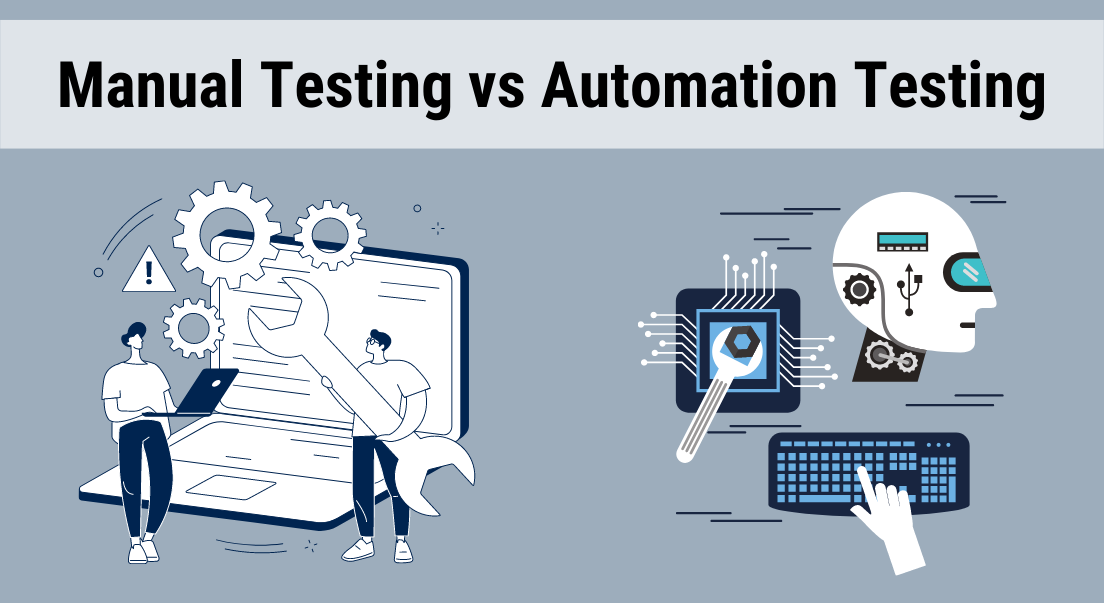Automation Testing Techniques: Best Practices for Seamless Integration
Automation Testing Techniques: Best Practices for Seamless Integration
Blog Article
From Guidebook to Automated Testing: A Comprehensive Guide to Transitioning Efficiently and Successfully
In the world of software program testing, the shift from guidebook to automated processes has actually become a significantly essential change for organizations looking for to boost efficiency and precision in their testing methods. The journey from guidebook to automated testing is not without its obstacles, yet when approached strategically and with a clear plan in mind, the advantages can be substantial.
Advantages of Automated Checking
Automated screening provides countless benefits, enhancing performance and precision in software application advancement procedures. One main advantage is the considerable decrease in testing time. Automated tests can be run concurrently on numerous gadgets and operating systems, dramatically speeding up the testing phase contrasted to hands-on screening. This raised efficiency enables faster responses on the top quality of the software, making it possible for programmers to determine and address issues quickly.
Moreover, automated screening makes sure a higher level of accuracy in spotting problems. Consistency in screening is additionally improved, as automated examinations perform the very same steps exactly each time they are run.
Selecting the Right Devices

Firstly, examine your needs and purposes. Recognize the extent of your project, the modern technologies involved, and the ability set of your group. This evaluation will aid you determine the functions and abilities you need in your screening devices.
Secondly, take into consideration the compatibility of the tools with your existing processes and systems. Seamless combination with your current software program advancement lifecycle is essential to ensure a smooth change to automation.
Additionally, evaluate the scalability and flexibility of the devices. As your screening needs develop, the tools need to have the ability to adjust and suit changes efficiently.
Last but not least, factor in the assistance and community around the tools. Durable assistance and an active customer neighborhood can supply important resources and support when applying automated screening. By very carefully thinking about these facets, you can pick the right devices that straighten with your requirements and set the phase for a successful transition to automated testing.
Creating Reliable Test Scripts

When crafting examination scripts, it is important to consider the details requirements of the software application being examined and ensure that the manuscripts deal with all important functionalities. Descriptive and clear calling conventions for test manuscripts and test instances can boost readability and maintainability. Furthermore, integrating mistake handling systems within the examination manuscripts can aid in determining and addressing issues promptly.
Furthermore, organizing examination scripts into modular parts can enhance reusability and scalability, lowering redundancy and enhancing effectiveness in test script upkeep. Regular evaluations and updates to evaluate scripts are crucial to equal evolving software application demands and capabilities. By adhering to these principles, testers can develop durable and reliable test manuscripts that add considerably to the success of automated testing processes.
Integrating Automation Into Workflows
By effortlessly incorporating automated testing devices like Selenium or Appium into the software growth lifecycle, groups can attain faster responses on code adjustments, leading to quicker bug detection and resolution. This integration allows for continuous screening throughout the advancement procedure, guaranteeing that any type of issues are recognized early on, resulting in higher software program quality. Correct assimilation of automation tools requires cooperation between growth, testing, and procedures groups to develop a unified operations that optimizes performance and performance in providing top quality software have a peek here program products.
Making Certain a Smooth Shift
Effectively transitioning to automated testing entails precise preparation and mindful implementation to take full advantage of and reduce disruptions efficiency in the software program advancement process - automation testing. To guarantee a smooth change, it is important to start by carrying out an extensive assessment of the existing testing procedures and identifying areas where automation can bring one of the most considerable benefits. Engaging with all stakeholders early on in the process, including designers, testers, and task managers, is critical for garnering assistance and buy-in for the automation initiative
Interaction is key throughout this shift stage. Clear communication of the objectives, advantages, and assumptions of automated screening helps to manage any kind of resistance or issues useful reference that may emerge. Additionally, offering appropriate training and resources for team members to upskill in automation devices and methods is vital for ensuring an effective change.
Conclusion
To conclude, transitioning from manual to automated screening offers various advantages, consisting of raised efficiency and dependability. By choosing the suitable tools, composing effective test scripts, and integrating automation effortlessly into process, companies can make certain a smooth and successful change. It is necessary to accept automation as an important asset in software testing processes to improve overall top quality and productivity.
In the world of software testing, the shift from handbook to automated processes has actually come to be an increasingly important transition for organizations seeking to enhance efficiency and accuracy in their testing techniques. Automated tests can be run at the same time on several devices and operating systems, substantially speeding up the testing stage contrasted to manual screening. Uniformity in testing is also improved, as automated tests perform the exact same steps precisely each time they are run.To make sure the effective application of chosen testing devices, the development of reliable test scripts plays an essential role in confirming the performance and efficiency of automated processes - automation testing. By complying with these principles, testers description can create reliable and robust test scripts that add significantly to the success of automated testing procedures
Report this page